Zambia's awe-inspiring treasures, rich cultures, and untamed natural beauty are explored in this comprehensive guide. You'll comprehend Zambia's uniqueness when we explore its facts. Zambia offers a wealth of activities, from the deafening roar of Victoria Falls, one of the Seven Natural Wonders of the World, to the huge savannas jam-packed with wildlife in South Luangwa National Park.
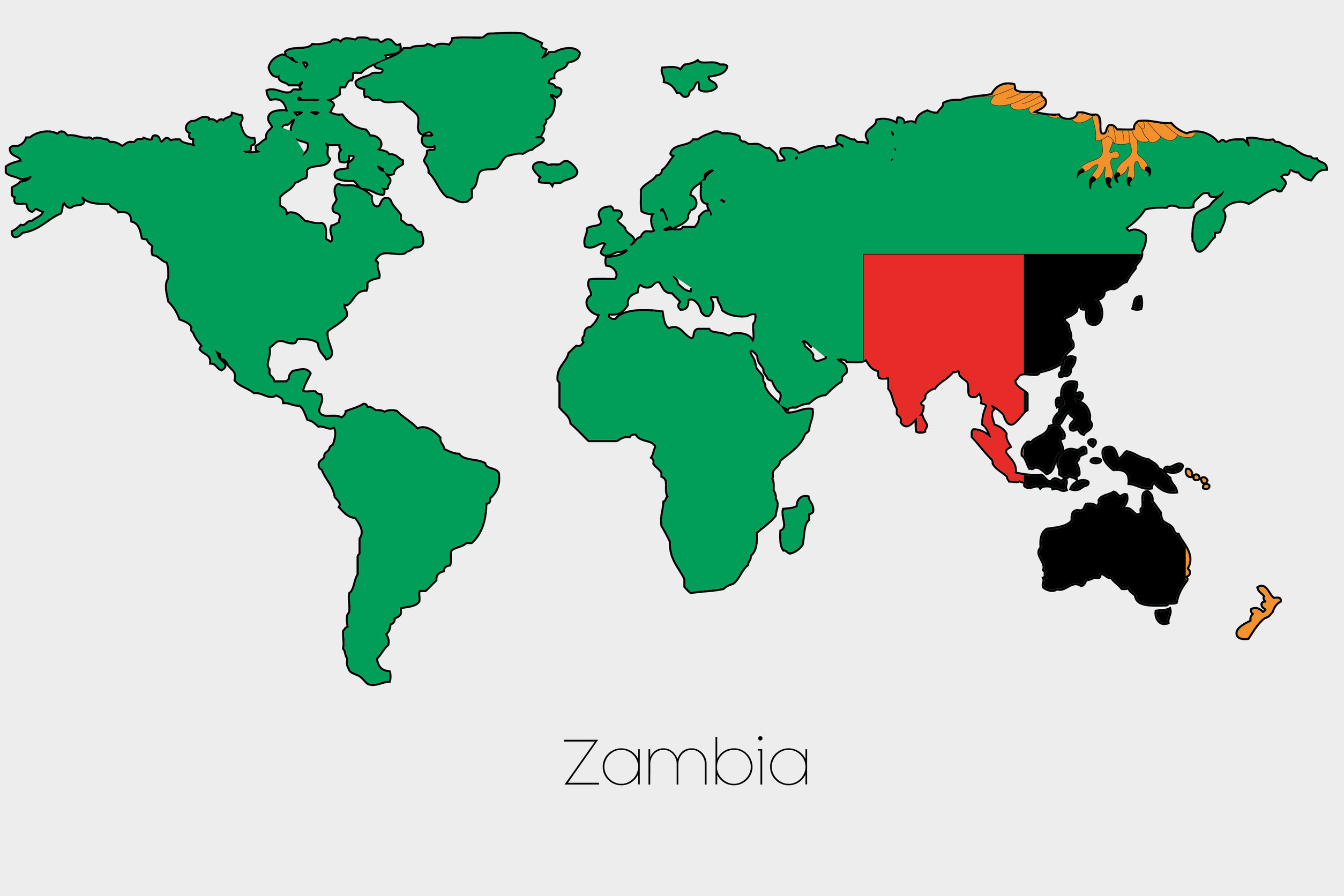
Connecting with a country's people, culture, and history, rather than just its geography, is crucial to understanding its heart. Zambia, known as the "Real Africa," is a great holiday destination due to its mix of adventure and tranquillity. This guide will help you explore Zambia whether you're spending a few days or a long time using an Zambia e-Visa. Take this adventure together and discover why Zambia leaves a lasting impression on travellers.
Brief overview
- This country is situated in the heart of south-central Africa and is landlocked.
- Located on an elevated plateau, it derives its name from the Zambezi River, which flows through nearly the entire country except for a small northern section.
- Countries that share a border:
- To the north, it is adjacent to the Democratic Republic of the Congo, while to the south, it borders Zimbabwe and Botswana.
- Tanzania is located to the northeast, Malawi lies to the west, and Mozambique is positioned to the southeast. Angola is situated to the west of Zambia and to the southwest of Namibia.
- Zambia's economy relies significantly on mining, especially copper mining.
- A majority of Zambians communicate in Bantu languages, which belong to the Niger-Congo language family.
- Significant waterfall: Victoria Falls, located on the Zambezi River.
- Lake Kariba, the largest artificial reservoir in the world by volume, is located in Zambia. The Kariba Dam was built on the Zambezi River, leading to the establishment of the capital city, Lusaka.
The first question that will come to your mind will be, What and where is Zambia?
Zambia is a landlocked nation in southern Africa that is renowned for its stunning scenery, plethora of animals, and kind people. It is a nature and adventure lover's dream, home to the famous Victoria Falls and the Zambezi River. Zambia, which shares borders with eight other nations, is a cultural and natural treasure begging to be discovered. Let's see what makes this country so unique.
Unveiling Lusaka, the Dynamic Capital City of Zambia
Zambia's capital, Lusaka, is a thriving, busy metropolis in the southern region of the nation. Home to enterprises, government agencies, and a diversified populace, it functions as Zambia's political, economic, and cultural hub. The city offers a variety of urban and cultural experiences by fusing traditional marketplaces, including the well-known Soweto Market, with modern infrastructure. Zambia's breathtaking natural landmarks, such as national parks and wildlife reserves, may be reached from Lusaka.
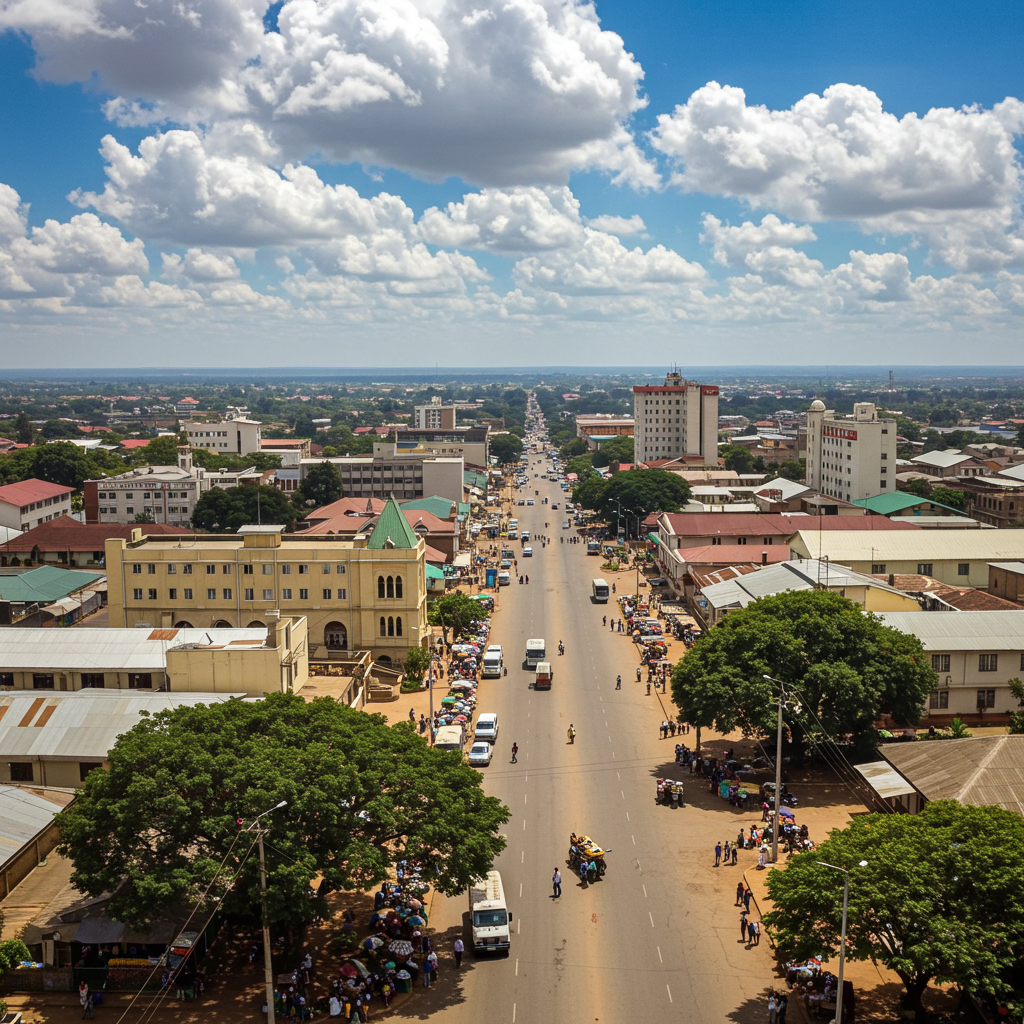
Discover Zambia’s Vibrant Heart: A Look at Its Population
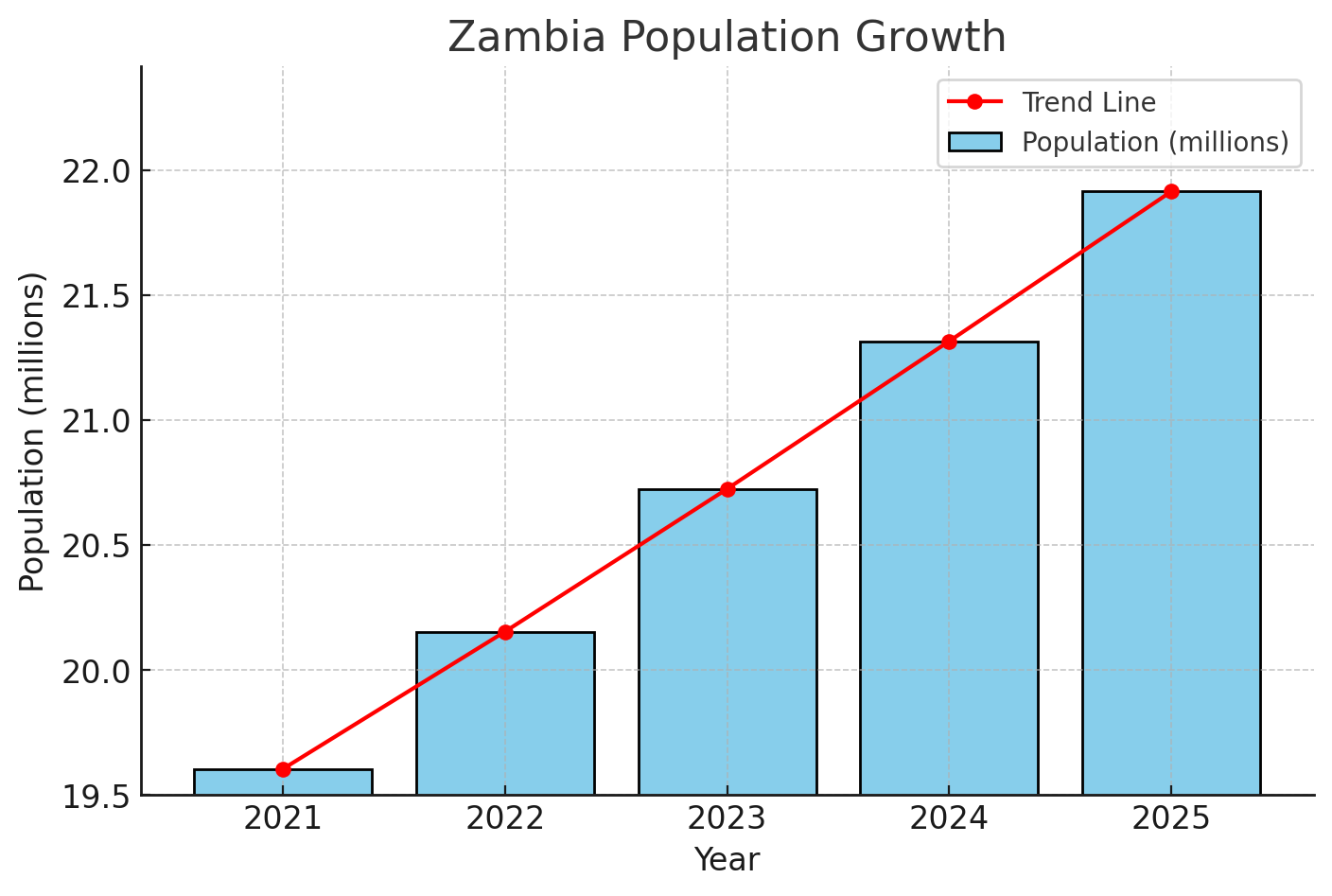
Here’s a breakdown of the data presented in the graph:
Year |
Population |
|---|---|
|
2025 |
21,913,874 |
|
2024 |
21,314,956 |
|
2023 |
20,723,965 |
|
2022 |
20,152,938 |
|
2021 |
19,603,607 |
Zambia Religious Demography
Zambia's religious landscape is predominantly Christian, with a small but diverse mix of other faiths. Here's a breakdown of the religious demography in Zambia:
Christianity
- Dominant Religion: Christianity is the most widely practiced religion in Zambia, with estimates suggesting that over 95% of the population identify as Christian.
- Denominations: The Christian community is diverse, encompassing various denominations, including Protestant churches (such as Anglican, Evangelical, and Pentecostal) and the Roman Catholic Church.
- Historical Influence: Christianity's roots in Zambia trace back to the arrival of European missionaries, who played a significant role in establishing schools and spreading the faith.
Islam
Islam is the second largest religion in Zambia, although it represents a small minority of the population (estimated at around 2.7%). The Muslim community is primarily Sunni, with smaller groups of Shia and Ismaili Muslims.
Hinduism
Hinduism is mainly practiced by the Asian community in Zambia, particularly those of South Asian descent. They are concentrated in urban areas like Lusaka and the Copperbelt Province.
Other Religions Practiced in Zambia
- Indigenous Religions:While Christianity is dominant, some individuals still adhere to traditional African belief systems or combine them with Christian practices.
- Other Faiths: Zambia also has small communities of Baha'is, Buddhists, Jews, and Sikhs, as well as those who do not affiliate with any religion.
Religious Freedom
In addition to declaring Zambia to be a Christian nation, the constitution ensures equality and freedom of religion for all. The government forbids discrimination on the basis of religion and is dedicated to maintaining the nation's multireligious makeup.
Demographic Distribution
Christians make up the majority in the majority of Zambia's religious communities. In cities and regions with a high concentration of immigrants or the descendants of immigrants from South Asia, Somalia, and the Middle East, the Muslim and Hindu communities are more concentrated.
The Rich Linguistic Tapestry of Zambia: Discover Its Languages
Official Language: English English is the official language of Zambia, used in government, education, and business. It acts as a unifying medium for communication across the country’s diverse linguistic landscape.
Most Spoken Language: Bemba Bemba is the most widely spoken language in Zambia, prevalent especially in the Northern and Copperbelt provinces. It is a Bantu language, rich in cultural heritage and widely used in daily conversations, media, and local education.
Exploring Zambia’s Wealth: All About Its Currency
The Kwacha (ZMW): Zambia's official currency is the Zambian Kwacha, abbreviated as ZMW. The word “Kwacha” means “dawn” in several Zambian languages, symbolizing a new beginning and hope.
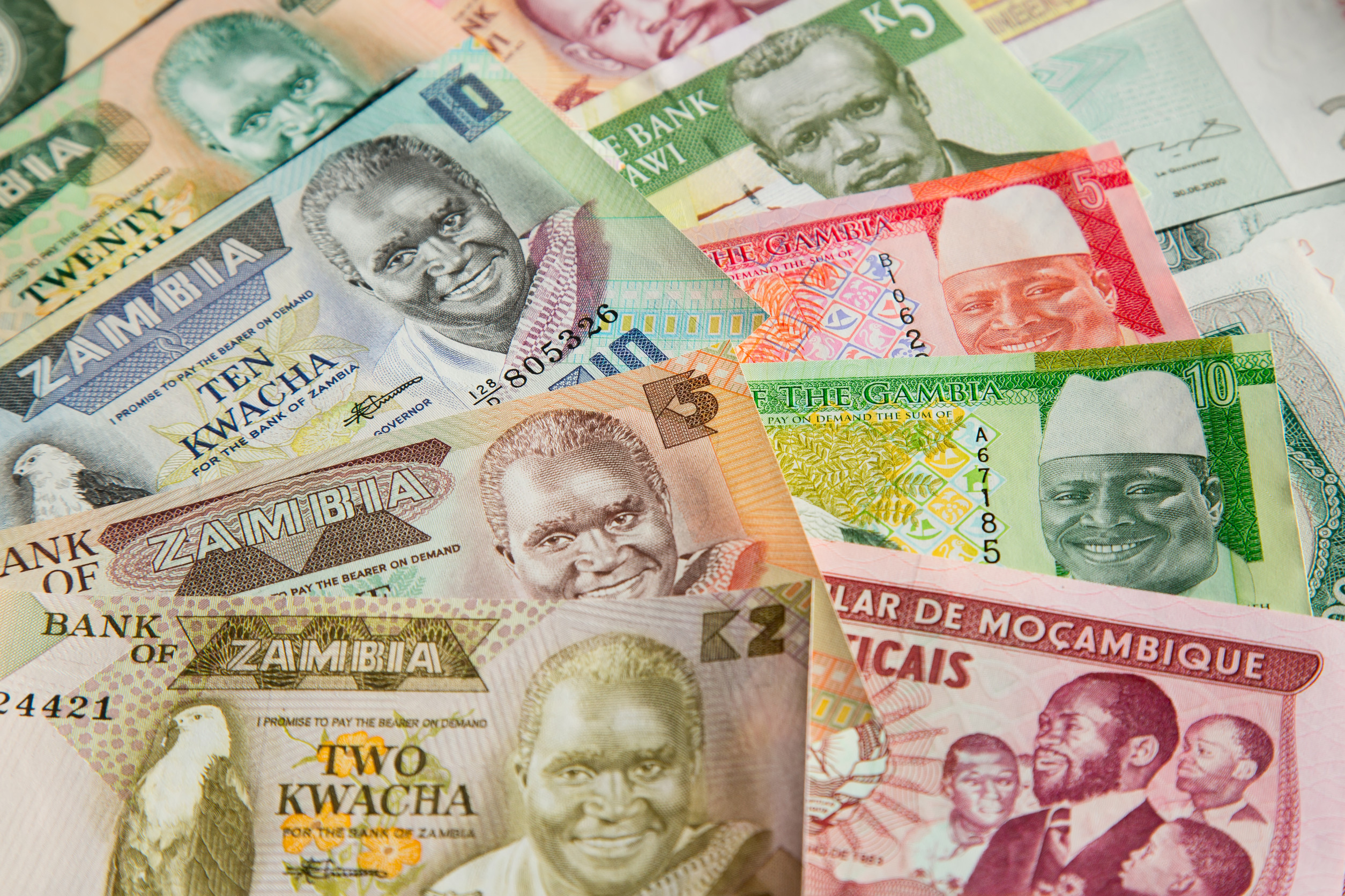
Interesting Facts
The Zambian kwacha features images of the African Fish Eagle, the national bird, on some of its banknotes.
The currency is a reflection of Zambia's rich natural resources, including images of copper mining, an essential industry for the country's economy.
Understanding the Zambian Kwacha can enhance your travel experience and ensure you navigate financial transactions with ease while exploring this beautiful country.
Majestic in Flight: Discover Zambia’s National Bird
The African Fish Eagle (Haliaeetus vocifer) is Zambia's national bird. This magnificent bird is well-known for its unique call, which is frequently connected to the noises of the African bush. Zambia's coat of arms prominently displays the African Fish Eagle, a symbol of the nation's rich natural history and the significance of its aquatic bodies.
A true icon of Africa's wilderness
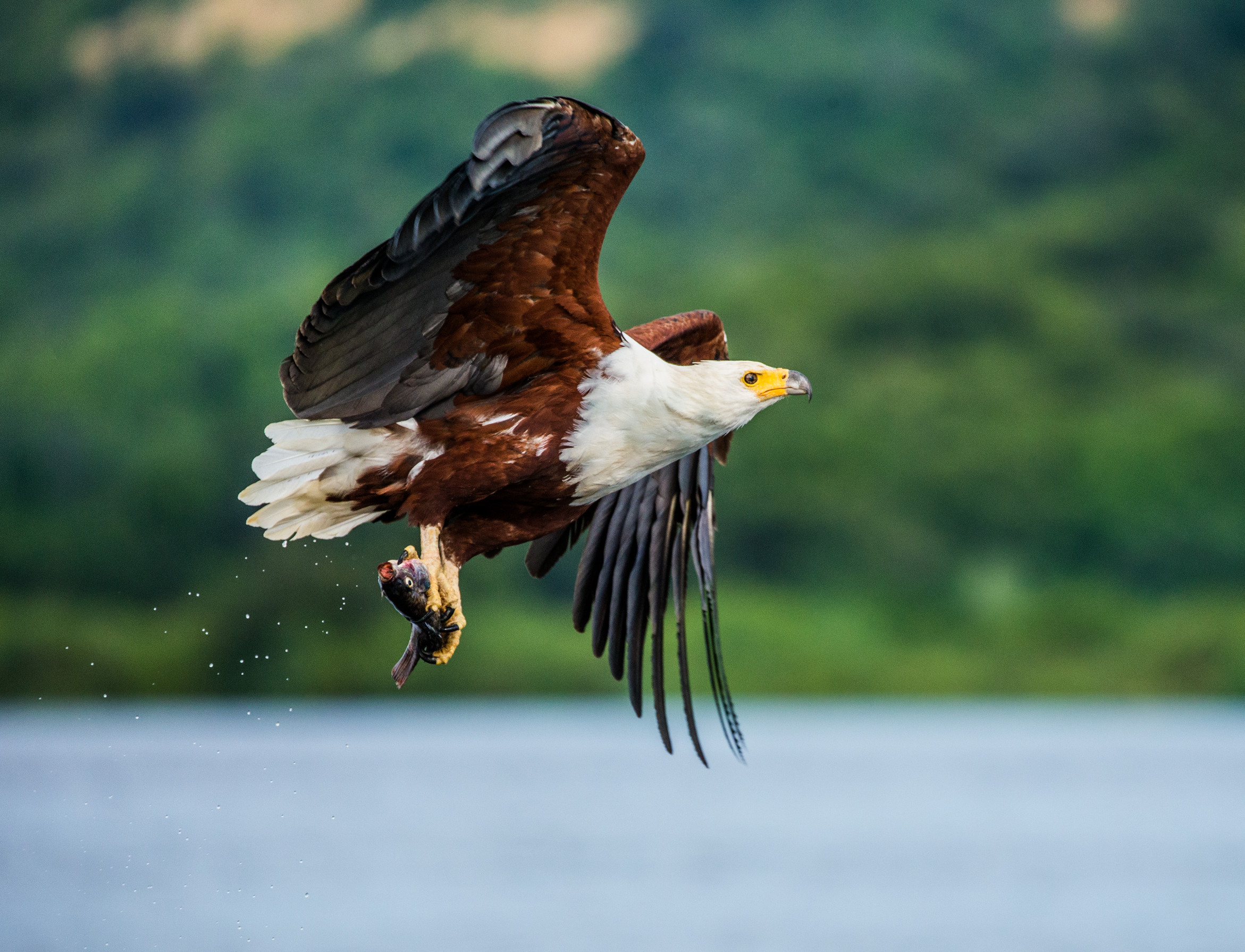
Fascinating Tidbits About the Majestic African Fish Eagle
- Iconic Call: Its loud, ringing call is known as the "voice of Africa."
- Diet: Primarily eats fish but also hunts birds, mammals, and scavenges.
- Appearance: Striking white head, chest, and tail with dark brown body and wings.
- Habitat: Lives near lakes, rivers, and reservoirs in sub-Saharan Africa.
- Monogamous: Mates for life and fiercely defends its territory.
- Nests: Builds massive nests in tall trees near water.
- Symbolism: Represents freedom and strength in Zambia and other African nations.
- Lifespan: Lives 12–24 years in the wild.
- Flight: Agile and powerful, with a wingspan of about 2 meters (6.5 feet).
Zambia's Vibrant Neighbors
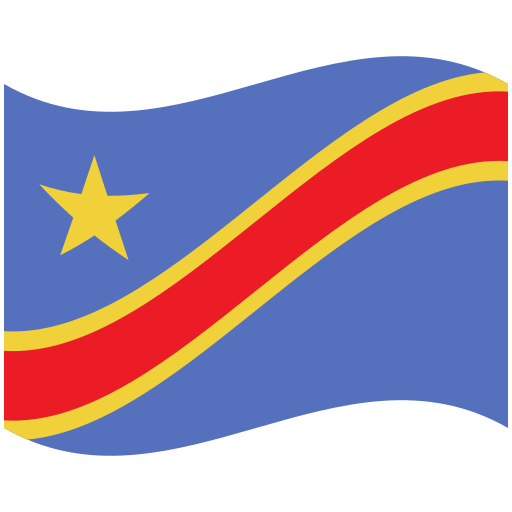
Democratic Republic of the Congo: To the north

United Republic of Tanzania: To the northeast

Malawi: To the east
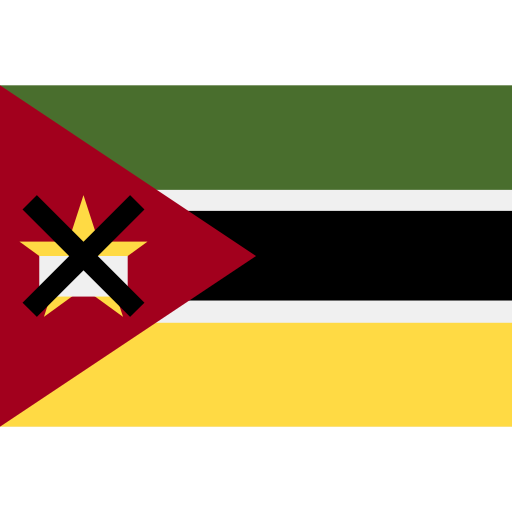
Mozambique: To the southeast
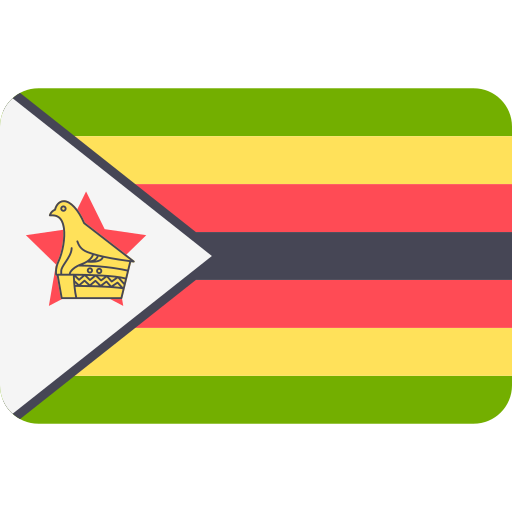
Zimbabwe: To the south

Botswana: To the south
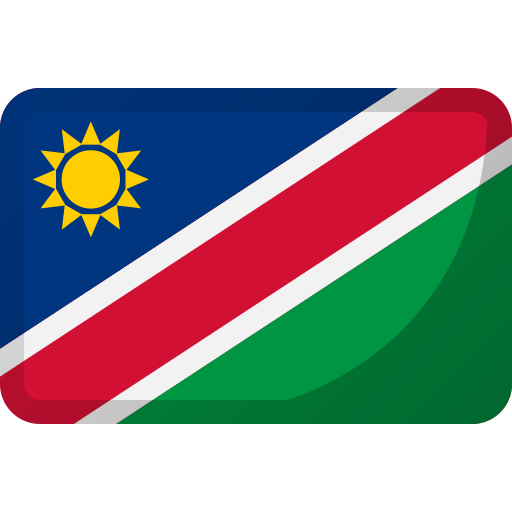
Namibia: To the west
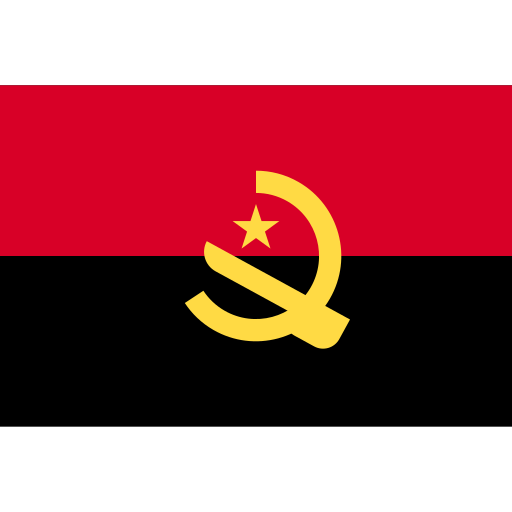
Angola: To the west
The Zambian Flag
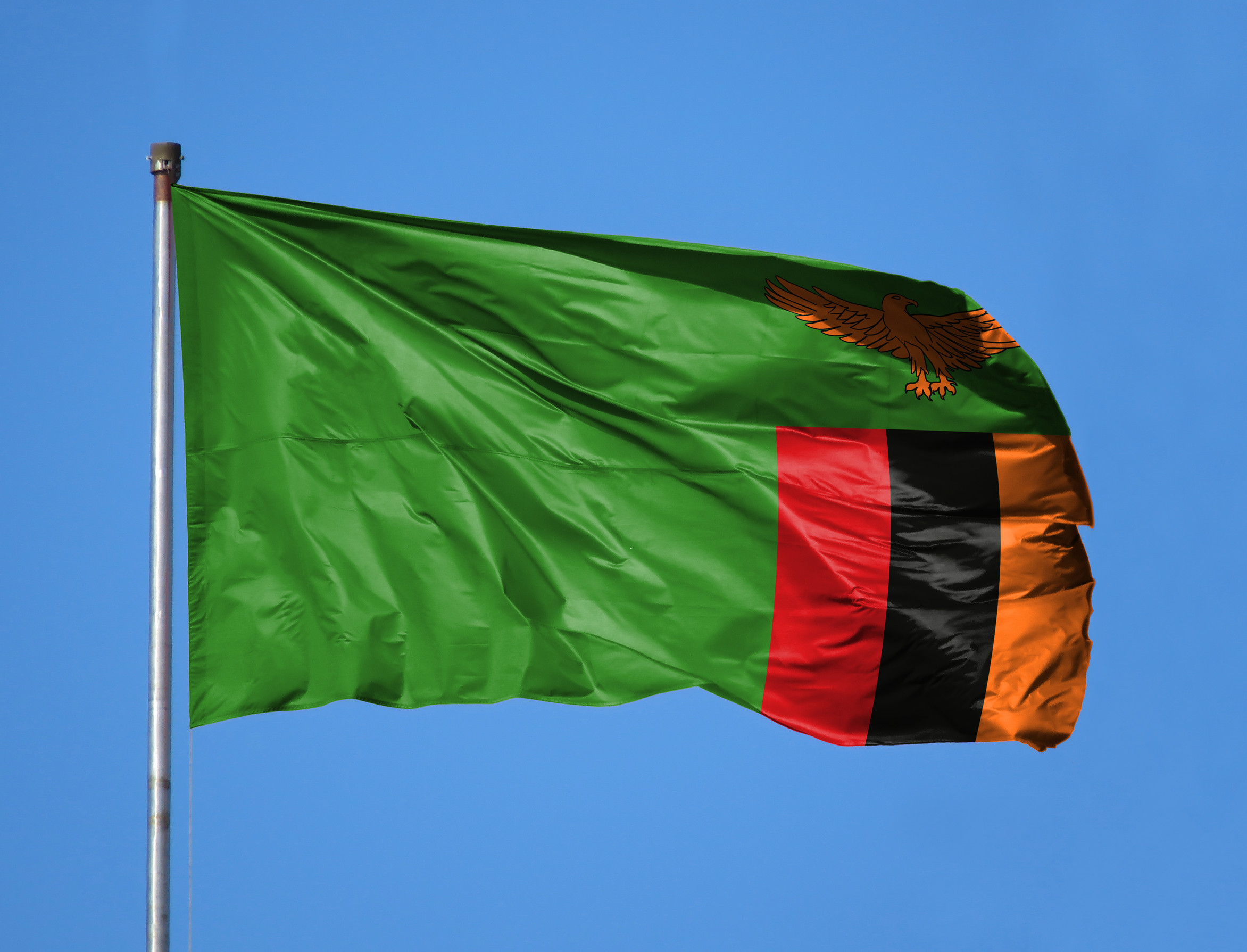
The Zambia Flag: Representing the country's heritage, struggles, and aspirations
The flag of Zambia was hoisted for the first time at midnight on October 23, 1964, as a symbol of the nation's natural resources and patriotism. It features a green background with three patterns of red, black, and orange, and an eagle in flight.
ZAMBIA FLAG: ELEMENTS AND THEIR MEANING
|
Green Field |
The green background represents Zambia's lush vegetation and natural wealth, particularly its agriculture and forests. |
|
Eagle |
The orange African fish eagle in flight symbolises freedom, the nation's ability to rise above its challenges, and the people's aspirations for a bright future. The eagle also represents Zambia's sovereignty and pride. |
|
Vertical Stripes |
The three vertical stripes on the fly side (right side) of the flag are:
|
|
Unity and Patriotism |
The flag as a whole embodies the unity, pride, and resilience of the Zambian people, as well as their connection to the land and its resources. |
Zambia’s Coat of Arms
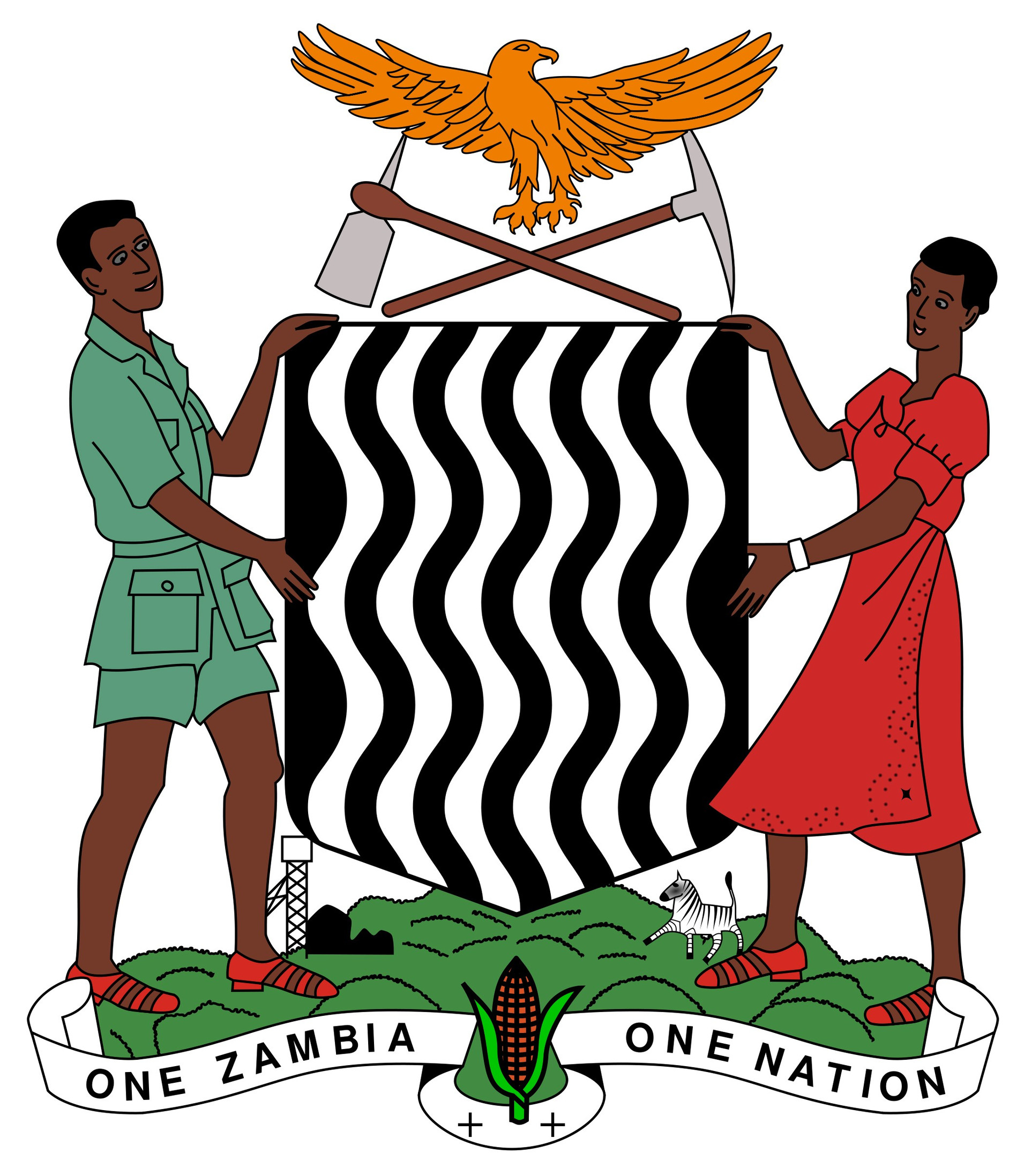
The Zambian coat of arms, adopted on October 24, 1964, when Zambia gained independence, is a symbol of the nation's identity, values, and aspirations. It features several elements, each with its own meaning. Here's a breakdown of the coat of arms and its symbolism:
Elements of the Coat of Arms
Shield
- The shield is divided into black and white wavy lines, representing Victoria Falls, one of Zambia's most iconic natural landmarks.
- At the top of the shield is a pickaxe and hoe, symbolising the country's mining and agricultural industries, which are key to Zambia's economy.
- Above the shield is an eagle, representing freedom and the nation's ability to rise above challenges.
Supporters
- On either side of the shield are two figures:
- A Zambian man in traditional attire represents the common people.
- A Zambian woman in traditional attire symbolises the importance of family and gender equality.
- Both figures stand on a mound of earth, which represents the land and its fertility.
Motto
- The coat of arms features a banner at the bottom with the national motto: "One Zambia, One Nation.". This emphasises the importance of unity and national cohesion among Zambia's diverse ethnic groups.
Tools and Resources
- The man holds a hoe, symbolising agriculture.
- The woman holds a maize cob, representing food and sustenance.
- The pickaxe on the shield symbolises mining, particularly copper, which is a major resource for Zambia.
Eagle
- The African fish eagle at the top of the shield is a symbol of freedom, strength, and the nation's sovereignty. It is also featured on the Zambian flag.
Blooming Beauty: Exploring Zambia’s National Flower
Bougainvillaeas, Zambia's national flower, are robust and colourful, with pink, purple, red, and orange bracts. Though not native to Zambia, it flourishes in its climate and represents beauty, resilience, and warmth.
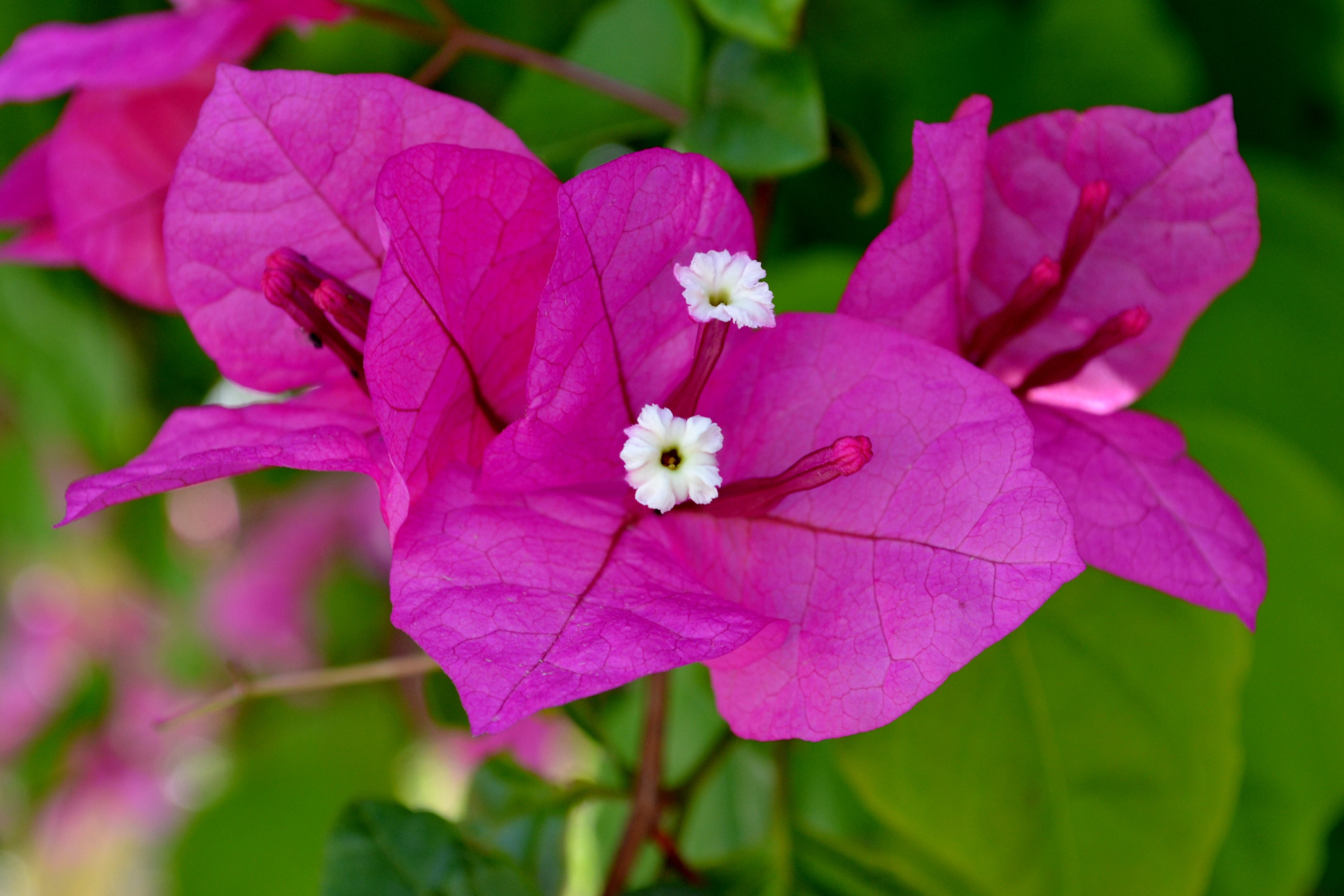
Bougainvillaea's colourful blooms decorate gardens, streets, and houses. Instead of flowers, the colourful sections are modified leaves (bracts) with little, white blooms inside. In harsh conditions, this plant embodies Zambia's resilience and progress.
Zambia's Pride: Discovering the National Game
Zambians are passionate about football (soccer), their national sport. The sport not only entertains but also inspires optimism and national pride, representing Zambia's unity and perseverance.

Zambia’s National Anthem
The national anthem of Zambia is called "Stand and Sing of Zambia, Proud and Free." When the nation became independent of British colonial administration in 1964, it was adopted. The music was composed by South African musician Enoch Sontonga, who also wrote the melody for South Africa's anthem, "Nkosi Sikelel' iAfrika."
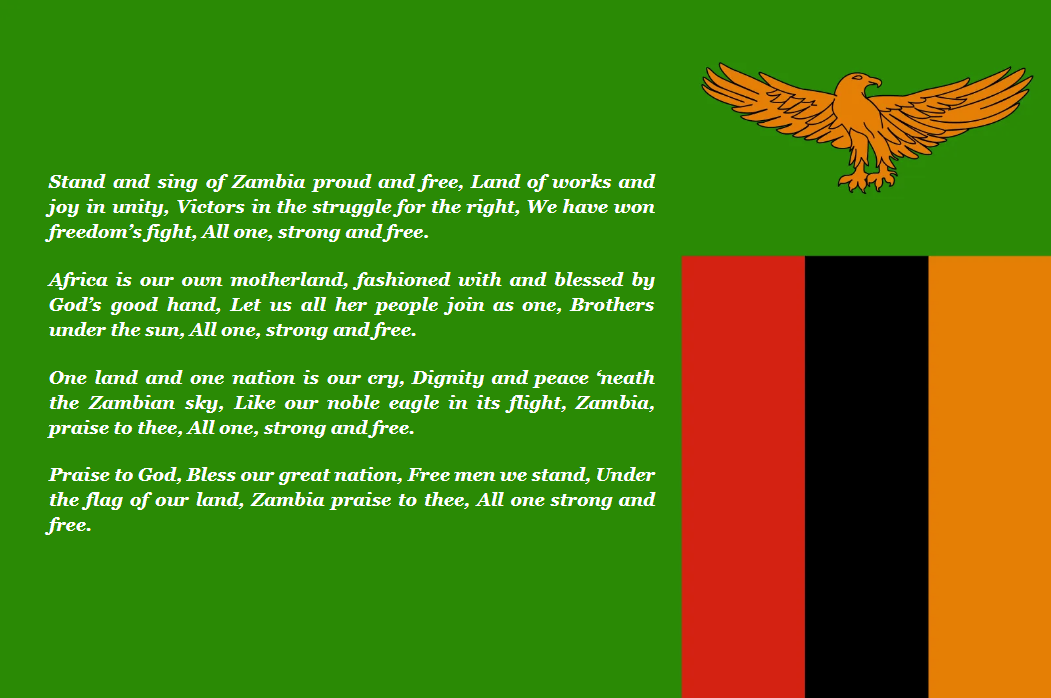
Zambia's pride, solidarity, and dedication to independence and peace are all reflected in the anthem. It is sung at national festivities, public functions, and educational institutions.
Discover the Heart of Zambia: Key Cities to Visit
Zambia boasts a wealth of wildlife refuges, vibrant cities, and a rich cultural legacy. The country's dedication to conservation and the friendliness of its citizens make it a popular tourism destination. The top cities in Zambia that every tourist should see are listed here.
Lusaka: The Metropolitan Melting Pot
- Population: 1,267,440
- Best Places to Visit in Lusaka: Lusaka National Park, Sunday Crafts Market, Chaminuka Game Reserve, Kabwata Cultural Village, Kalimba Reptile Park.
Zambia's capital, Lusaka, is a dynamic metropolis and a gateway to other locations. The city has adopted eco-friendly measures under the “Keep Lusaka Clean” effort to retain its urban charm. Lusaka combines urban life and African culture with modern retail malls such as Manda Hill and Arcades, which hold weekly farmers' markets promoting local produce and cultural experiences like the National Museum.
Livingstone: The Gateway to Victoria Falls
- Population: 109,203
- Best Places to Visit in Livingstone: Livingstone Museum, Craft market, World War 1 Museum, Livingstone Railway Museum
Victoria Falls—one of the Seven Natural Wonders—is forever associated with Livingstone. The falls are Zambia's tourism highlight, protected by strong environmental laws. Colonial heritage is on display at the Livingstone Museum and Maramba Market. The Livingstone Tourism Association, which promotes hospitality and service, has improved the city's tourism infrastructure.
Ndola: The Friendly Copper City
- Population: 451,246
- Best Places to visit in Ndola: The Copperbelt Museum, Dag Hammarskjöld Memorial, Levy Mwanawasa Stadium, Ndola Golf Club, Lake Chilengwa
Ndola, the capital of the Copperbelt Province and Zambia's third-largest city, serves as the nation's commercial and industrial centre. The city is working on initiatives like the "Clean and Healthy City Initiative," which promotes civic pride and motivates nearby companies to spend money on garbage management and urban beautification. The Copperbelt Museum explores Ndola's history of copper mining, while the Dag Hammarskjöld Memorial provides information about the city's special position in UN history.
Kabwe: The City of Mines and History
- Population: 188,979
- Best Places to Visit in Kabwe: Mulungushi Dam, Prayer Mountain, Mukuyu Tree National Monument (the Big Tree)
The Central Province's capital, Kabwe, is home to interesting historical sites such as the Broken Hill Man Site, which is noteworthy for its contributions to early human history, and the Big Tree National Monument, which is over a thousand years old. Through the "Kabwe Greening Initiative," which aims to revitalise green spaces and grow trees, the city also actively participates in the nation's drive for a greener future.
Mongu: Tradition Meets Nature
- Population: 52,534
- Best Places to Visit in Mongu: Nayuma Museum, Mumwa Craft Association.
Mongu, the capital of the Western Province, is closely associated with Lozi customs and is notable for its picturesque setting on the Zambezi River's floodplains. In order to preserve the region's natural and cultural legacy, the Barotse Royal Establishment collaborates closely with conservation groups and supports yearly events such as the Kuomboka Ceremony, which features traditional canoes and cultural celebrations.
Vital Information
Having gone through the essential details and insights about Zambia, you must feel eager to apply for a visa to explore the country. Great news for you! Zambia provides eVisa options for numerous countries, and if you qualify, you can easily complete the Zambia eVisa application form and begin your adventure to Zambia. Below are some of the useful links:
Zambia eVisa eligible countries
Zambia eVisa documents required
Best places to visit in Zambia
Conclusion
Experience the mesmerising blend of Zambia's vibrant culture, abundant wildlife, and breathtaking landscapes. Whether you're interested in safaris, local cultures, or experiencing Victoria Falls, Zambia offers a unique and amazing experience. Take full advantage of this African treasure and discover everything it has to offer.
How to Secure Your eVisa for Zambia
Step1: Complete the online eVisa application by entering your passport details.
Step2: Execute the online payment using a Credit or Debit card.
Step3: Monitor your email for payment confirmation and the electronic delivery of your visa.
